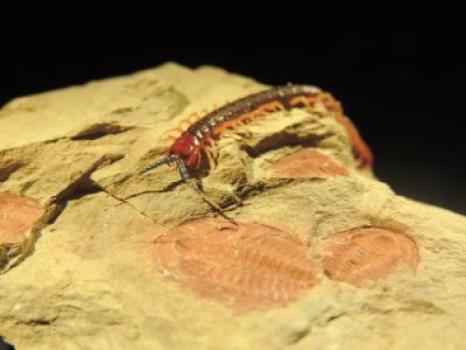We're open daily! View holiday hours
Science News
Explosion Explained
September 16, 2013

What kept Darwin up at night? The Cambrian explosion.
The period on our planet between 540 and 520 million years ago when most modern animal groups appeared is also known as evolution’s Big Bang. Prior to the Cambrian explosion, life was much simpler on Earth—single-celled organisms dominated the landscape.
But how did so many different organisms develop in such a short period of time? “The abrupt appearance of dozens of animal groups during this time is arguably the most important evolutionary event after the origin of life,” says Michael Lee of the University of Adelaide. “Darwin himself famously considered that this was at odds with the normal evolutionary processes.”
Lee and his colleagues decided to look into “Darwin’s dilemma,” focusing on arthropods (insects, crustaceans, arachnids and their relatives), the most diverse animal group in both the Cambrian period and present day.
“It was during this Cambrian period that many of the most familiar traits associated with this group of animals evolved, like a hard exoskeleton, jointed legs, and compound (multi-faceted) eyes that are shared by all arthropods,” explains team member Greg Edgecombe of the Natural History Museum of London. “We even find the first appearance in the fossil record of the antenna that insects, millipedes and lobsters all have, and the earliest biting jaws.”
The team quantified the anatomical and genetic differences between living animals, and established a timeframe over which those differences accumulated with the help of the fossil record and intricate mathematical models.
“In this study we’ve estimated that rates of both morphological and genetic evolution during the Cambrian explosion were five times faster than today—quite rapid, but perfectly consistent with Darwin’s theory of evolution,” Lee says.
ScienceNOW offers the numbers:
The creatures’ genetic codes were changing by about .117% every million years—approximately 5.5 times faster than modern estimates.
Unusual, perhaps, but in line with natural selection, the team indicates. The study appears in the recent edition of Current Biology.
Perhaps Darwin can get some rest now.
Image: Michael Lee